I'm trying to extract all words with Uppercase initial letter from a text, with the REGEXEXTRACT formula in google sheets.
Ideally the first word of sentences should be ignored and only all subsequent words with first Uppercase letter should be extracted.
Other Close Questions and Formulas:
I've found those other two questions and answers:
How to extract multiple names with capital letters in Google Sheets?
=ARRAYFORMULA(TRIM(IFERROR(REGEXREPLACE(IFERROR(REGEXEXTRACT(IFERROR(SPLIT(A2:A, CHAR(10))), "(.*) .*@")), "Mr. |Mrs. ", ""))))
Extract only ALLCAPS words with regex
=REGEXEXTRACT(A2, REPT(".* ([A-Z]{2,})", COUNTA(SPLIT(REGEXREPLACE(A2,"([A-Z]{2,})","$"),"$"))-1))
They are close but I can't apply them successfully to my project.
The Regex Pattern I Use:
I also found this regex [A-ZÖ][a-zö]+ pattern that works well to get all the Uppercase first letter words.
The problem is that it's not ignoring the first words of sentences.
Other Python Solution Vs Google Sheets Formula:
I've also found this python tutorial and script to do it:
Proper Noun Extraction in Python using NLP in Python
# Importing the required libraries
import nltk
from nltk.corpus import stopwords
from nltk.tokenize import word_tokenize, sent_tokenize
# Function to extract the proper nouns
def ProperNounExtractor(text):
print('PROPER NOUNS EXTRACTED :')
sentences = nltk.sent_tokenize(text)
for sentence in sentences:
words = nltk.word_tokenize(sentence)
words = [word for word in words if word not in set(stopwords.words('english'))]
tagged = nltk.pos_tag(words)
for (word, tag) in tagged:
if tag == 'NNP': # If the word is a proper noun
print(word)
text = """Down the Rabbit-Hole
Alice was beginning to get very tired of sitting by her sister on the bank, and of having nothing to do: once or twice she had peeped into the book her sister was reading, but it had no pictures or conversations in it, `and what is the use of a book,' thought Alice `without pictures or conversation?'
So she was considering in her own mind (as well as she could, for the hot day made her feel very sleepy and stupid), whether the pleasure of making a daisy-chain would be worth the trouble of getting up and picking the daisies, when suddenly a White Rabbit with pink eyes ran close by her.
There was nothing so very remarkable in that; nor did Alice think it so very much out of the way to hear the Rabbit say to itself, `Oh dear! Oh dear! I shall be late!' (when she thought it over afterwards, it occurred to her that she ought to have wondered at this, but at the time it all seemed quite natural); but when the Rabbit actually took a watch out of its waistcoat-pocket, and looked at it, and then hurried on, Alice started to her feet, for it flashed across her mind that she had never before seen a rabbit with either a waistcoat-pocket, or a watch to take out of it, and burning with curiosity, she ran across the field after it, and fortunately was just in time to see it pop down a large rabbit-hole under the hedge."""
# Calling the ProperNounExtractor function to extract all the proper nouns from the given text.
ProperNounExtractor(text)
It works well, but I the idea in doing it in Google Sheets is to have the Uppercase first letter Words adjacent to the text in a table format for more convenient reference.
Question Summary:
How would you adjust my formula in the sample sheet below
=ARRAYFORMULA(IF(A1:A="","",REGEXEXTRACT(A1:A,"[A-ZÖ][a-zö]+")))
to add those functions:
- Extract all the first Uppercase letter Words from each cell with text
- Ignore the first words of sentences
- return all the first Uppercase letter Words save the first words from sentences into the adjacent cells, one word per cell (similar to this example (from the 2nd Close question above):
 )
)
Sample Sheet:
Here's my testing Sample Sheet
Many thanks for your help!

